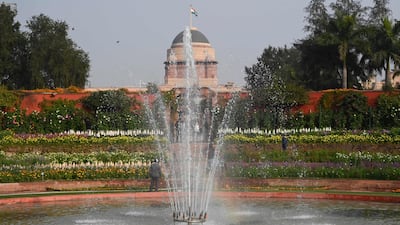India's energy demand is set to see the largest increase for any country through to 2040 supported by its burgeoning population and a high rate of urbanisation, according to the International Energy Agency.
Prior to the pandemic, the South Asian country's projected energy demand was forecast to rise by nearly 50 per cent. However, India is now expected to register lower growth of 35 per cent if Covid-19 is brought under control this year.
The projection will place India as the most lucrative end-user for crude and products, particularly from the Middle East. National oil companies such as Saudi Aramco and the UAE's Adnoc are betting on India's growing demand for crude and are planning to undertake a 1.2 million barrels per day greenfield refinery on the west coast of India.
The scheme, which also includes a petrochemicals complex, could cost as much as $70 billion and is an indication of the potential growth in future oil demand from the South Asian economy.
Even if the pandemic, which is already showing signs of losing steam in Asia's third-largest economy, has a more prolonged economic impact, the IEA estimates that India's energy demand will grow at 25 per cent by 2040.
India, which is poised to overtake China as the world's most populous nation, is set to add 270 million people over the next decade to its current population of 1.366 billion.
China is the world's biggest consumer of primary energy and is also the biggest importer of oil. However, Beijing, which enforced measures to restrict its population growth and is also looking to engineer its economy to become more sustainable, is likely to see a slowdown in energy consumption in the foreseeable future.
India, which adds the equivalent of the population of Los Angeles to its urban ranks on an annual basis, is likely to see growing demand for building materials, steel and cement over the coming decades.
"To meet growth in electricity demand over the next 20 years, India will need to add a power system the size of the European Union to what it has now," the IEA said in its outlook for the country's economy.
Millions of Indian households will fuel the country's growing energy demand as they buy appliances, air conditioning units and vehicles in line with an increase in disposable incomes for its middle classes.
India's electricity sector is largely powered by polluting coal which, along with solid biomass, accounts for 80 per cent of the country's power generation.
The country plans to import significant volumes of gas – seen as a transitional fuel – and also add more renewable capacities to its grid.
India plans to generate an ambitious 450 gigawatts from renewable sources by 2030.
High levels of pollution in cities, which worsen during northern Indian winters, have highlighted the need to quadruple renewable capacity to offset emissions.
However, India's emissions per capita are still half of the global average.
Displacing solid biomass such as firewood as the household fuel of choice in many energy-poor regions of India is still a challenge, the IEA said.
Some 660 million people, largely women, collect firewood for cooking purposes, resulting in severe health and environmental challenges for nearly half of India's population.


